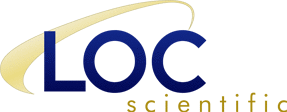Methods Of Water Purification For Laboratories
Water purity is an important factor in laboratory operations. It directly influences the accuracy of results and the longevity of equipment. Laboratories require water of specific grades. These grades range from Type-III for general washing to Type-I for advanced analytical techniques such as ICP-MS.
This necessity calls for advanced methods of water purification tailored to distinct applications. Understanding the processes and their capabilities helps laboratories precisely operate while balancing costs.
Methods of Lab Water Purification: Meeting Laboratory Needs
Lab water purification requires a strategic approach to achieve the specific water quality necessary for different applications. Each purification method addresses distinct impurities, from dissolved inorganics to microorganisms. These methods often work best when combined with complementary techniques. Laboratories can select the most effective solutions for their workflows by understanding the limitations of these methods.

Distillation
Distillation is one of the earliest and most reliable laboratory water purification methods. The process involves boiling water, collecting the steam, and condensing it into a clean receptacle. This straightforward approach effectively eliminates inorganic salts and high-boiling impurities.
However, distillation is not without its limitations. It is energy-intensive and slow; low-boiling organics may pass through the process. Additionally, prolonged storage risks contamination as the water interacts with its environment.
Filtration for Suspended Impurities
Filtration eliminates suspended particles and microorganisms. Filters with varying pore sizes cater to specific needs. These needs can range from coarse filtration to ultrafiltration, eliminating endotoxins and bacterial contaminants.
Techniques like reverse osmosis offer an effective solution. Labs utilize filtration for various impurities by combining filtration with additional purification processes. While filtration is cost-effective and accessible, its inability to remove dissolved inorganics and organics often necessitates pairing with complementary methods.
Deionization for High Purity Water
Deionization involves ion exchange resins to strip cations and anions from the water. This method produces water with exceptional resistivity. It achieves the stringent requirements of Type-I laboratory water.
While deionization efficiently removes ions, it falls short in eliminating bacteria, organics, and particulates. Over time, ion exchange beds can accumulate microbial contaminants. This accumulation compromises the purity of the water unless properly maintained and regenerated.
Adsorption for Organic Impurity Reduction
Activated carbon adsorption targets organics, chlorine, and chloramines. This method significantly lowers the Total Organic Carbon (TOC) levels in water. It is particularly valuable in safeguarding downstream purification systems from damage caused by chlorine exposure.
While adsorption effectively tackles specific contaminants, it does not address all dissolved organics and can release fines into the purified water stream. Adsorption is often integrated into a broader purification strategy for optimal results.
Selecting the Right Water Purification System
No single purification method meets all requirements. A carefully designed combination of techniques—such as pairing reverse osmosis with deionization or integrating UV oxidation with filtration—can provide water that meets specific purity standards. Our water purification system solutions address these needs by utilizing the strengths of multiple technologies.
At LOC Scientific, we bring decades of expertise to laboratory design. Our work includes state-of-the-art water purification systems. If you plan to outfit a new lab or upgrade existing systems, trust in our solutions to prioritize performance, efficiency, and cost-effectiveness. Contact us to learn how we can support your laboratory’s success.

